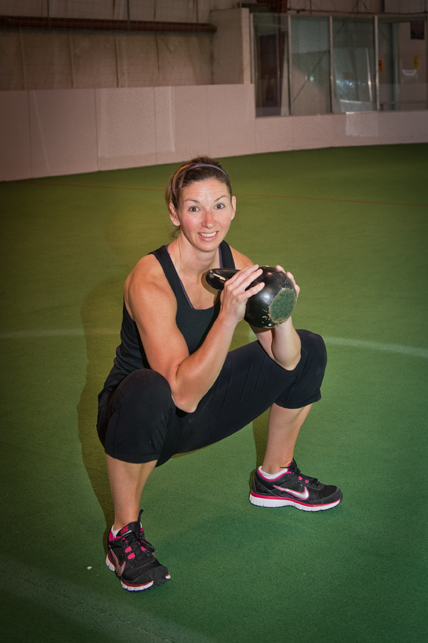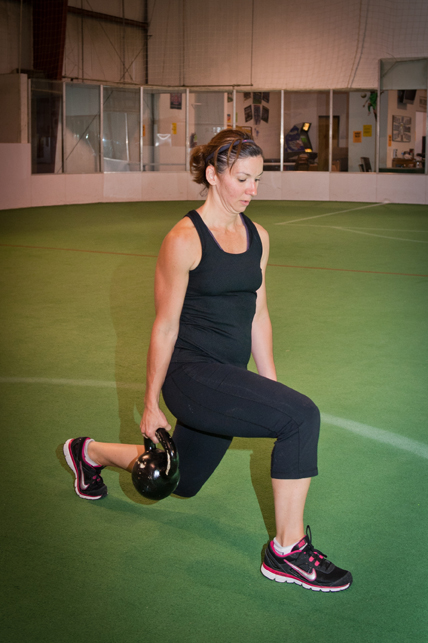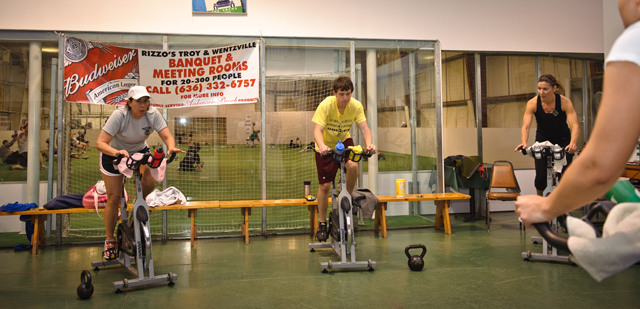After two or three years of dealing with pain in my hip, I knew things were getting worse. I used to be able to warm up and experience pain-free workouts, only to stiffen up significantly after I left the gym. But things had progressed to the point that I was in pain all the time and was unable to reach my normal range of motion on squats and lunges. I had a lot of instability and heard popping noises that indicated things were not “right” with the hip joint. Every day activities like siding in or out of the car would often leave me unable to walk without severe pain. I was climbing steps like a two year old, taking them one step at a time. I knew this was not normal for a healthy, very active 40 year old mother of four.
I was referred to a well- known orthopedist, and told that I had fluid on the hips and was likely headed for a hip replacement. He did not know the cause of the fluid and pain, and I was told it was “probably arthritis.” He suggested cortisone injections, but offered no explanation for the problems. I was walking with a limp most of the time, and I had been forced by this time to cut way back on the number of fitness classes I was teaching.
When I saw Dr. Clohisy six weeks later, I was surprised to learn that I had bilateral developmental hip dysplasia. I was unhappy to hear that surgery would be required to fix the instability issues and the pain, but very encouraged to hear that I could likely make a full recovery and return to my schedule of teaching 10-15 hours a week of group exercise following my PAO procedure. My procedure was scheduled for about three months from that point. I continued to go to physical therapy until my procedure so that I could strengthen the muscles that would help me to recover from the procedure. I did lots of research to be sure that Dr. Clohisy was the “right man for the job,” even sending letters to several specialists across the country. They all agreed that this procedure was necessary and that Dr. Clohisy was one of the few surgeons that was qualified to do such a procedure.
My recovery from surgery began with a 3 day hospital stay. I was expecting this initial part of the process to be painful, and it was. I had a physical therapist help me on the second day to use a walker to get to the door of my room and back to bed. I didn’t feel much like the “rockstar” that the doctors were calling me for accomplishing that small task, but they all assured me that I was ahead of schedule. I made it my goal to do everything the physical therapists said, to be vigilant about NOT doing what I wasn’t supposed to do, and to stay ahead of schedule on my recovery by taking very good care of myself. The pain seemed to get a little better every day, and I found that I could sleep quite well when positioned properly with many pillows.
After four weeks I was allowed to put weight on my left side and was cleared to drive. I still grew tired easily, and had a great deal of pain while using my crutches to help me walk, but I was very encouraged. I could tell that the hip joint, though still causing me pain, was completely “stable” and was no longer sort of sliding loosely around in the socket. I was only using Tylenol most of the time, and was completely off stronger pain medication six weeks after the surgery. I was completely done using the crutches, by the end of the fifth week. I experienced a great deal of muscle loss and lost about nine pounds in those first few weeks. My leg was visibly smaller than the other side, and I worried that I would not be able to build it back to the same size. I continued to see my physical therapist to build strength for 8 weeks after surgery. I also continued to do the exercises I was given at home for many weeks after the procedure. By the eight week mark, I was doing step ups onto a weight bench, reverse lunges and using a leg press regularly.
We went on a vacation to the beach at the nine week mark, and with lots of relaxation and a daily workout, I began walking with absolutely NO limp during that trip. I could walk in the sand without any of the instability issues that had plagued me in the sand for several years. I was amazed at how strong I felt, and I began slowly adding back in my other activities at that point.
I had my surgery nine months ago. I am back to teaching 10-12 hours per week of group exercise classes and training on my own as well. I am able to squat lower than I ever have, and I am completely pain free in my left hip. I am being careful to keep the other one as healthy as possible to avoid the need for surgery to repair it. I have found the physical therapy helpful in teaching me to use my muscles to keep the hip as stable as possible. I also avoid running long distances, and use kettlebell training that does not require a lot of impact to get my cardio workouts in. I know that keeping my muscles strong is imperative to my future with these hips. I am so happy to have had the opportunity to continue my regular activities without the limitations of a full hip replacement. Going through the process was very difficult, but the results have been life-changing. Having gone through it all, I would quickly do it again to achieve these great results.
I found Dr. Clohisy, his nurses, and the other doctors who treated me to be knowledgeable, helpful, and professional at all times. They gave me the tools and education I needed to be as prepared as possible for my recovery. They were also available to me during every step of the process. I am very grateful to have had such high quality care from such exceptionally well-trained experts.


